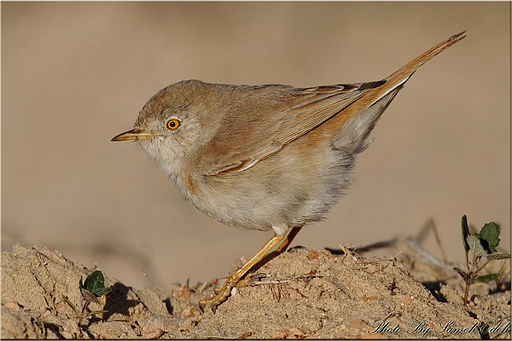Superregnum: Eukaryota
Cladus: Unikonta
Cladus: Opisthokonta
Cladus: Holozoa
Regnum: Animalia
Subregnum: Eumetazoa
Cladus: Bilateria
Cladus: Nephrozoa
Superphylum: Deuterostomia
Phylum: Chordata
Subphylum: Vertebrata
Infraphylum: Gnathostomata
Megaclassis: Osteichthyes
Cladus: Sarcopterygii
Cladus: Rhipidistia
Cladus: Tetrapodomorpha
Cladus: Eotetrapodiformes
Cladus: Elpistostegalia
Superclassis: Tetrapoda
Cladus: Reptiliomorpha
Cladus: Amniota
Classis: Reptilia
Cladus: Eureptilia
Cladus: Romeriida
Subclassis: Diapsida
Cladus: Sauria
Infraclassis: Archosauromorpha
Cladus: Crurotarsi
Divisio: Archosauria
Cladus: Avemetatarsalia
Cladus: Ornithodira
Subtaxon: Dinosauromorpha
Cladus: Dinosauriformes
Cladus: Dracohors
Cladus: Dinosauria
Ordo: Saurischia
Cladus: Eusaurischia
Subordo: Theropoda
Cladus: Neotheropoda
Cladus: Averostra
Cladus: Tetanurae
Cladus: Avetheropoda
Cladus: Coelurosauria
Cladus: Tyrannoraptora
Cladus: Maniraptoromorpha
Cladus: Maniraptoriformes
Cladus: Maniraptora
Cladus: Pennaraptora
Cladus: Paraves
Cladus: Eumaniraptora
Cladus: Avialae
Infraclassis: Aves
Cladus: Euavialae
Cladus: Avebrevicauda
Cladus: Pygostylia
Cladus: Ornithothoraces
Cladus: Ornithuromorpha
Cladus: Carinatae
Parvclassis: Neornithes
Cohors: Neognathae
Cladus: Neoaves
Cladus: Telluraves
Cladus: Australaves
Ordo: Passeriformes
Subordo: Passeri
Infraordo: Passerida
Superfamilia: Sylvioidea
Familia: Sylviidae
Genus: Sylvia
Species: Sylvia nana
Subspecies: S. n. nana - S. n. theresae
Name
Sylvia nana (Hemprich & Ehrenberg, 1833)
References
Symbolae Physicae (1828) sig.cc,note5
Vernacular names
English: Desert Warbler, Asian Desert Warbler
The Asian desert warbler (Curruca nana) is a typical warbler which breeds in the deserts of central and western Asia and the extreme east of Europe (Volga Delta area east to western Inner Mongolia in China), and migrating to similar habitats in southwestern Asia (Arabia to northwestern India) and the far northeast of Africa (Red Sea coastal regions) in winter. Until recently it was considered conspecific with the African desert warbler (and called just "desert warbler"),[2] but is now given specific status.[3][4] The two are still each other's closest living relatives, and their relationships to other typical warblers are not clear. They may be fairly close to the common whitethroat; particularly, female whitethroats look much like a richly coloured Asian desert warbler. But it seems that all these three taxa are fairly basal members of the genus.[5][6]
It is a small bird (the second-smallest in the genus after African desert warbler), 11.5–12.5 cm long. The sexes are almost identical in colour, pale grey-brown above with browner wings and tail, and whitish below; the bill and legs are yellowish, and the eye has a yellow iris. Like its relatives, it is insectivorous, but will also take small berries; unlike most warblers, it commonly feeds on the ground. The song is a distinctive jingle often given in an advertisement flight, with a mix of clear and harsher notes. It breeds in semi-desert and dry steppe environments, as long as some bushes for nesting occur. The nest is built in low shrub, and 4–6 eggs are laid.[2][4]
It has occurred as a rare vagrant as far west as Great Britain.[7]
The specific nana is Latin for "dwarf", from earlier Ancient Greek nanos.[8]
References
BirdLife International (2017) [amended version of 2017 assessment]. "Sylvia nana". IUCN Red List of Threatened Species. 2017: e.T103872996A118852574. doi:10.2305/IUCN.UK.2017-3.RLTS.T103872996A118852574.en. Retrieved 16 March 2022.
Del Hoyo, J., Elliot, A., & Christie, D. (editors). (2006). Handbook of the Birds of the World. Volume 11: Old World Flycatchers to Old World Warblers. Lynx Edicions. ISBN 84-96553-06-X.
IOC World Bird List version 2.9: Old World Warblers
Svensson, L., Mullarney, K. & Zetterström, D. (2009). Collins Bird Guide, second edition. HarperCollins, London ISBN 978-0-00-726726-2.
Helbig, A. J. (2001). The characteristics of the genus: Phylogeny and biogeography of the genus Sylvia. Pages 24–28 in: Shirihai, H., Gargallo, G., Helbig, A. J., & Harris, A. Sylvia Warblers. Helm Identification Guides ISBN 0-7136-3984-9
Jønsson, K. A., & Fjeldså, J. (2006). A phylogenetic supertree of oscine passerine birds (Aves: Passeri). Zool. Scripta 35 (2): 149–186. doi:10.1111/j.1463-6409.2006.00221.x (HTML abstract).
Dymond, J. N., Fraser, P. A., & Gantlett, S. J. M. (1989). Rare Birds in Britain and Ireland. T & A D Poyser ISBN 0-85661-053-4.
Jobling, James A (2010). The Helm Dictionary of Scientific Bird Names. London: Christopher Helm. pp. 265, 376. ISBN 978-1-4081-2501-4.
Retrieved from "http://en.wikipedia.org/"
All text is available under the terms of the GNU Free Documentation License


